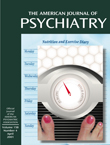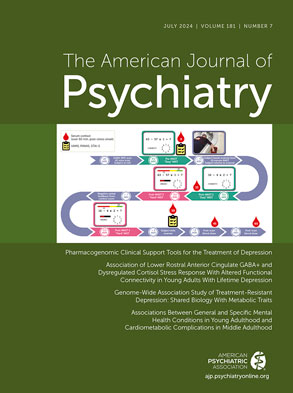To the Editor: Dr. McWilliams and colleagues investigated our hypothesis that patients with dissociative symptoms during panic attacks would have higher rates of childhood trauma than those without such symptoms and found significant findings where we found none. It remains then to attempt to explain these differences as well as to place them in perspective.
First, our study groups were notably different: ours was clinical; theirs, epidemiological. As we discussed, studies with clinical study groups are limited by factors associated with selection bias (e.g., subjects are seeking treatment and are willing to participate in clinical research), and these subjects typically have higher levels of distress and comorbidity than do community samples. Conversely, epidemiologic studies are usually limited by the use of data based on nonclinician assessments and may tend to inflate rates of clinically significant psychiatric disorders since distress or impairment is typically much lower than in clinical settings.
Second, our study group was relatively free of comorbidity, whereas the comorbidity of the sample of Dr. McWilliams et al. was not examined. This is important because comorbidity is a major confound in the study of dissociation. The exclusion of significant comorbidity in our clinical study group therefore represented a strength of the study, rather than a limitation. Early studies showing more depersonalization during panic attacks were conducted in clinical study groups with high rates of comorbid disorders that are also associated with childhood trauma and dissociative symptom profiles. It is possible that depersonalization/derealization during panic attacks is mediated by the presence of comorbid disorders, since dissociative symptoms are also associated with general psychopathology
(1).
Third, there may be differences in the severity of panic attacks between the two study groups. Dr. McWilliams and colleagues attempted to operationalize the severity of panic attacks by examining the frequencies of panic symptoms other than depersonalization/derealization. Other potentially important markers of severity not examined by Dr. McWilliams et al. are the presence or absence of agoraphobia (found in 87% of our study group), the severity of depersonalization/derealization (we required severity that was moderate or greater), and the frequency of panic attacks (our study required at least one attack per week). It is surprising that the report by Dr. McWilliams et al. includes a higher proportion of patients with derealization (59%) than ours (46%), given the fact that ours was a clinical group. This suggests differences in both assessment and group selection between the two studies.
In any case, the main findings of Dr. McWilliams et al. of significantly higher rates of serious neglect and rape before age 16 in patients with panic attacks with derealization/depersonalization are important and consistent with those of an earlier report
(2). The National Comorbidity Survey data set should be reexamined to investigate the role of the factors we noted in explaining the findings.
It is also noteworthy, however, that the rates of serious childhood trauma in the National Comorbidity Survey panic disorder sample are still relatively low and the group differences in these rates, although statistically significant, are small. In both studies, the majority of panic patients with depersonalization/derealization did not report serious childhood trauma.
Both our study and the present report are limited by the absence of a trait measure of dissociation. More important, both studies are post hoc examinations of this question in a data set collected for other purposes. Future studies should develop a more inclusive multifactorial model of vulnerability to dissociation, since both studies indicate that childhood trauma does not account for the presence of depersonalization/derealization during panic attacks in most cases.

